And now another trout from the October 2015 releases by Replica Toy Fish. It hadn’t occurred to me until now, but it turns out that all of the salmonid species so far have been from the Pacific side of the salmonid family–except the the brown trout and the two versions of the brook trout (so far…foreshadow!) This has included the coastal rainbow and Little Kern golden trout, and now we are adding a congener, one of the many ‘subspecies’ of cutthroat trout, the greenback cutthroat trout Oncorhynchus virginalis stomias. Until 2024 all cutthroat trout were within Oncorhynchus clarkii, but there are now four recognized species including O. clarkii (the coastal cutthroats), O. lewisi (the westlope cutthroats), O. henshawii (the Lahontan cutthroats), and O. virginalis (the Rocky Mountain cutthroats), all of which contain a number of subspecies (more properly, “Uniquely Identifiable Evolutionary Units” or UIEUs). The cutthroat trouts range along both sides of the Rockies, from areas of BC and Alberta in the North to the southwest US states, with each UIEU generally regional and limited to specific bodies of water.
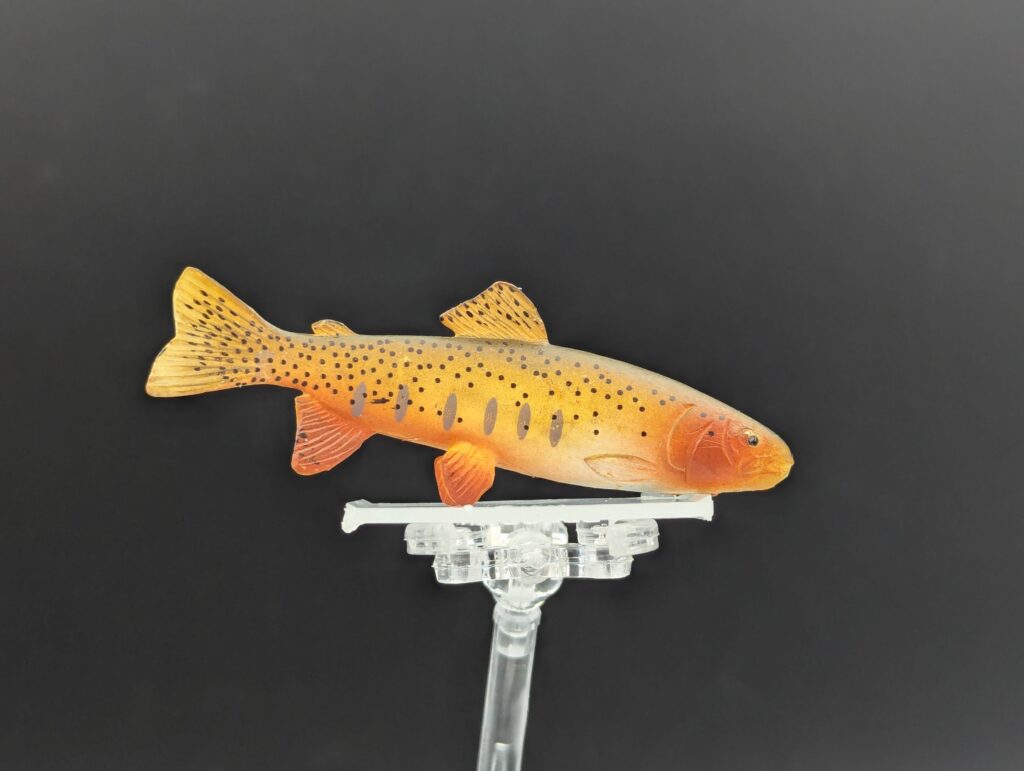
Or, in many cases, were or might not be much longer–some are already considered extinct, while others are heavily impacted by competition or hybridization with introduced species, and habitat disruption. This is true of the species under consideration today, which was once widespread along the eastern Rockies in the South Platte and (maybe) the Arkansas River basins–but is now down to 1% of that range. This has lead to designations of Critically Imperiled by NatureServe and Threatened by the ESA (although it was thought extinct in the 1930s until a population was found in 1957).
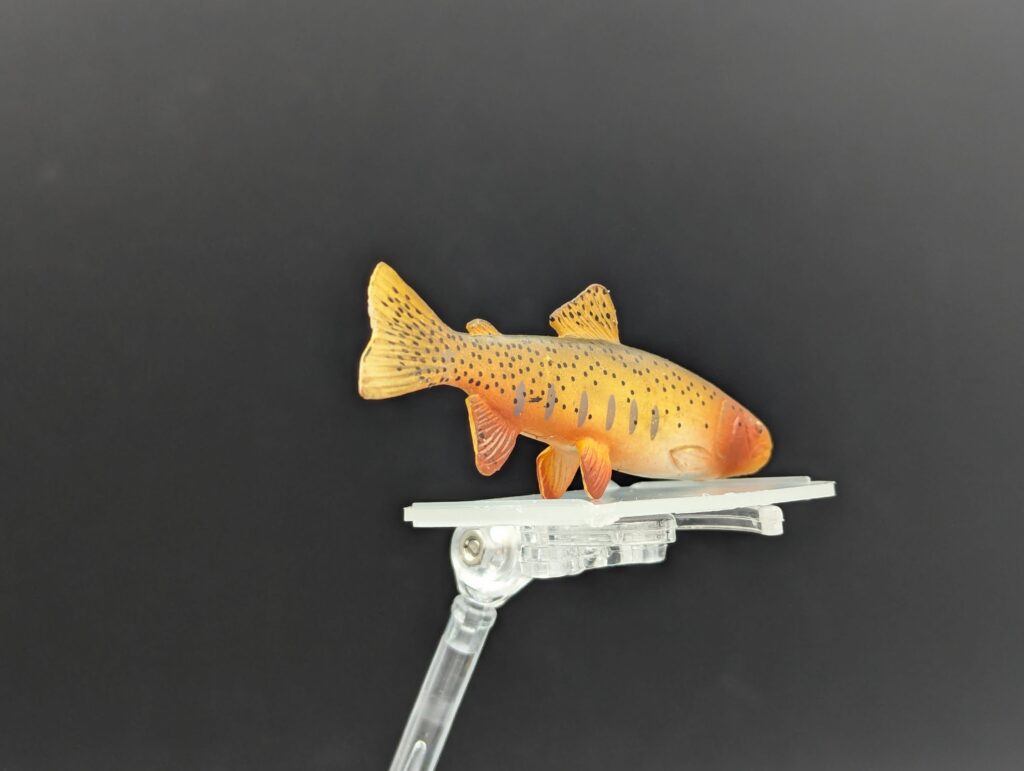
The greenback cutthroat trout is overall representative of cutthroats in general. Like all Oncorhynchus, they are midwater predators that prefer clear freshwater streams (and in some UIEUs on the Pacific, some do enter marine environments). As a group, they are recognized by a red or pink marking on the within the folds under the lower jaw and throat. Different populations vary in lengths from 15cm to 102cm (6 inches to 40 inches) in length; the greenback cutthroat is on the smaller end, at around 40cm (16inches).
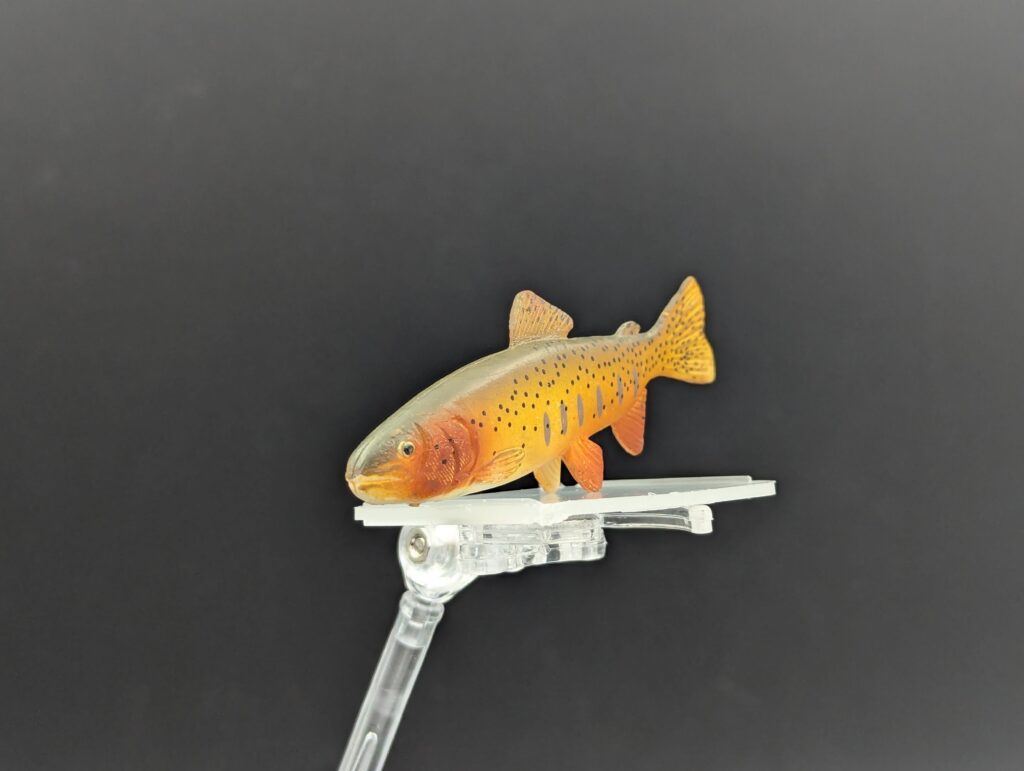
The figure itself is about 7.7cm (3 inches) long which would give a scale of 1:5. It is sculpted in a long, streamlined shape with a slightly blunted snout. As with many figure, the pectoral fins are against the body, but the rest are extended broadly. There is a pronounced notch in the dorsal fin with is great, and the adipose fin is fairly long. The pelvic fins are large and extended from a fairly broad base, while the anal fin is very large and triangular. The tail is the expected emarginate with a slightly rounded margin. All fin rays are very pronounced. The mouth is closed, and the eyes are pronounced as bulges. The opercula are also sculpted well.
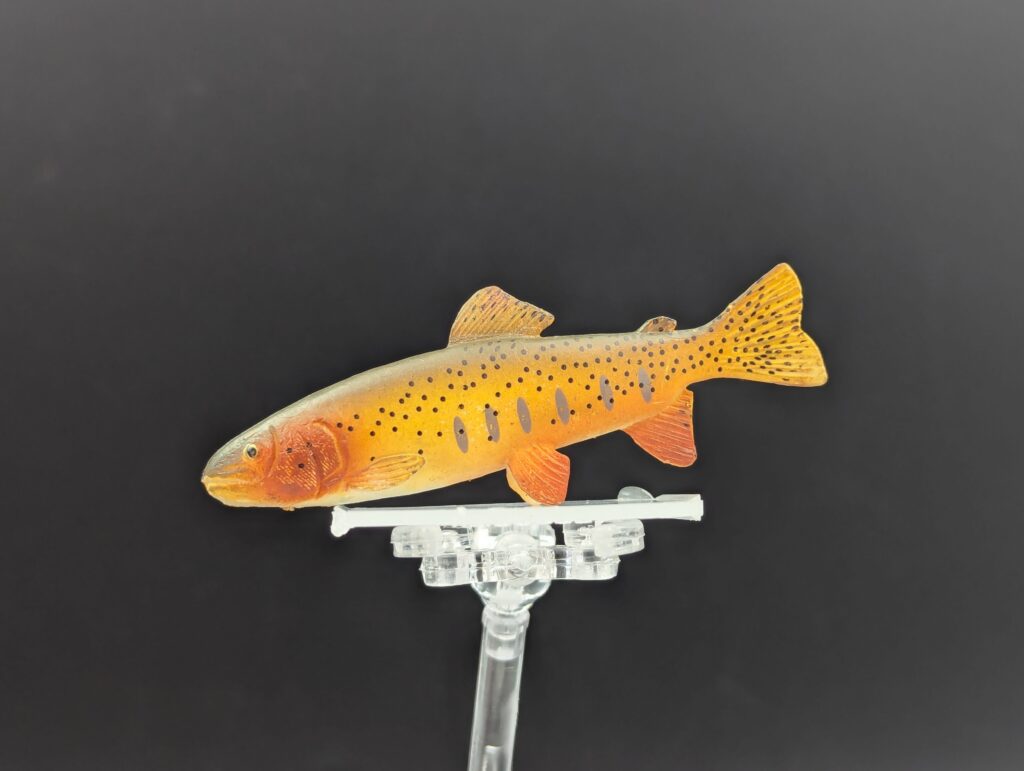
And speaking of the opercula, this is where we need to start to look at the colouration. What we should see is a red line along the margin of the jaw, within the folds…of course, the folds are not really sculpted, but more importantly there are no red lines on the figure. The cheeks are painted in a fairly dark orange along the opercula which I think might have been the intention (this is also pretty characteristic for greenbacks). The rest of the colouration is reasonable for a cutthroat. The back is a dark olive, and the sides through to the venter and tail is dark yellow. Around the pelvic and anal fins there are dark pink highlights, a colour that carries into those fins. The The entirety of the body is covered in small black dots, including on the opercula, dorsal fins and tail. Low down on the sides of the body are several light grey parr marks, which is characteristic of many cutthroat trout including the greenback. There should be at least a hint of a red line along the lateral line, but this is variable.
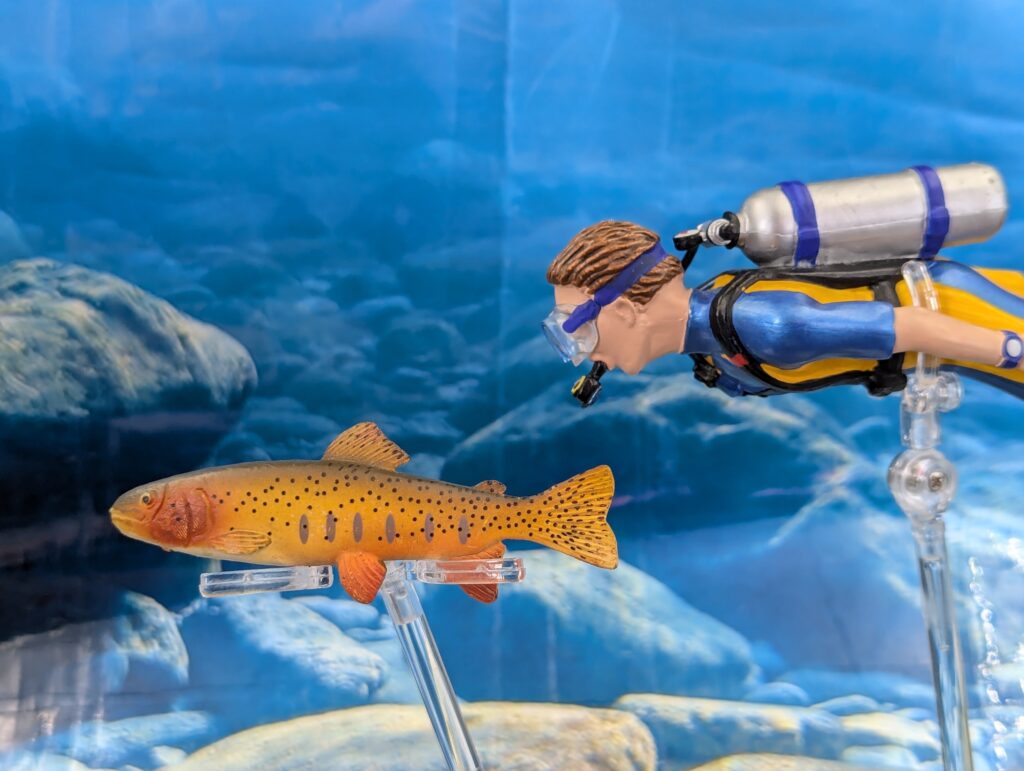
Overall, this is a very colourful trout figure, which makes sense as greenback cutthroats are apparently considered one of the more colourful varieties. It’s not a perfect match, and honestly a slight modification with a very thin brush could give it that cutthroat throat. I won’t complain a whole lot, since there aren’t many cutthroat figures…specifically, there are two, and we’ll be looking at the other one next time! So at least we got a couple of them, because unless another company steps up I can’t imagine we’ll be seeing a lot of others of this particular group of trout.
Disclaimer: links to Ebay and Amazon on the AnimalToyBlog are affiliate links, so we make a small commission if you use them. Thanks for supporting us!



